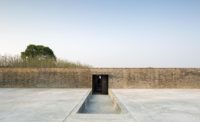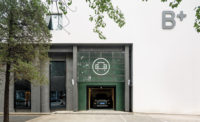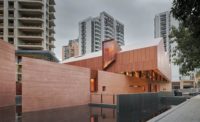From teacups and branding to hotels and master planning, Lyndon Neri and Rossana Hu have embraced a broad swath of design work since starting their firm, Neri & Hu Design and Research Office (NHDRO), in Shanghai in 2004. Coming from Michael Graves’s office, both partners saw nothing unusual in moving from one scale to another — designing ceramic salt-and-pepper shakers one moment, then the plan for the mixed-use Legation Quarter in Chengdu the next. “It helps us develop a multifaceted approach,” says Neri. “Today, there’s a lot more crossover between fields. Marcel Wanders goes from products to hotels. Sejima designs furniture. Even Zumthor does a candlestick for Alessi.” Hu adds, “It opens your mind so you don’t get caught up in your own world. Doing just a certain type of architecture—with all the theory and history—can trap you in a box.”
The husband-and-wife team has taken an entrepreneurial approach to their careers, moving beyond design in 2005 to found Design Republic, a retail company that sells furnishings and furniture from local and international companies to China’s emerging middle class. And they helped bring the interiors trade show 100% Design to Shanghai in 2008 and 2009. Recently they completed their own headquarters building at 88 Yuqing Road in Shanghai, which houses a Design Republic store on the ground floor and offices for NHDRO and Design Republic upstairs. Now they have 22 projects on the boards, including a boutique hotel, called The Water House, on the Bund in Shanghai; a Westin hotel and museum in Xian; a seven-story residential complex in Shanghai; and houses in Shanghai, Mexico, Singapore, and the United States. NHDRO’s 70-person staff hails from roughly 20 different countries, which is helping the firm tackle more international commissions. “Working globally has created a different dynamic in the office and forced us to rethink how we do things,” states Neri. In response to the expanding scale and scope of their work, Neri and Hu have hired an old friend from the U.S. who has experience working on and managing large architecture projects.
“One recurring theme in our work is exploring cultural identity,” states Hu, who was born in Taiwan and moved to the United States at age 12. (Neri was born in the Philippines and moved to the U.S. when he was 15.) Since both of the partners are members of the Chinese diaspora and studied and worked in the U.S. for many years, they bring a different perspective on what it means to be Chinese or Asian. “We interpret culture through architecture,” she explains. “I think we’re becoming more abstract — using signs and symbols and materials to express identity. And we’re exploring certain nonvisual vehicles — such as poetry, literature, and storytelling — to do this.” Neri and Hu’s path from Michael Graves and Postmodernism to a growing abstraction contrasts with that of architects like Yung Ho Chang, who returned to China in 1993 after studying in the U.S. and took a more Modernist stance until recent years, when he began to incorporate elements taken from China’s vernacular and craft traditions. Ironically, both NHDRO and Chang may end up in the same place after coming from different aesthetic directions.
“It’s all about the appropriateness of a particular approach to a specific project and place,” says Neri. “Sometimes we end up contradicting ourselves, because we’re still experimenting. It’s both exciting and frustrating.” The firm is working on a 35-story tower in Hunan, for example, and wrestling with a new scale and new ideas. “It’s a design breakthrough for us, but it’s borderline ugly,” Neri laughs. “Our only fear is that we’ll just become commercial” like so many other Chinese firms.
























Post a comment to this article
Report Abusive Comment